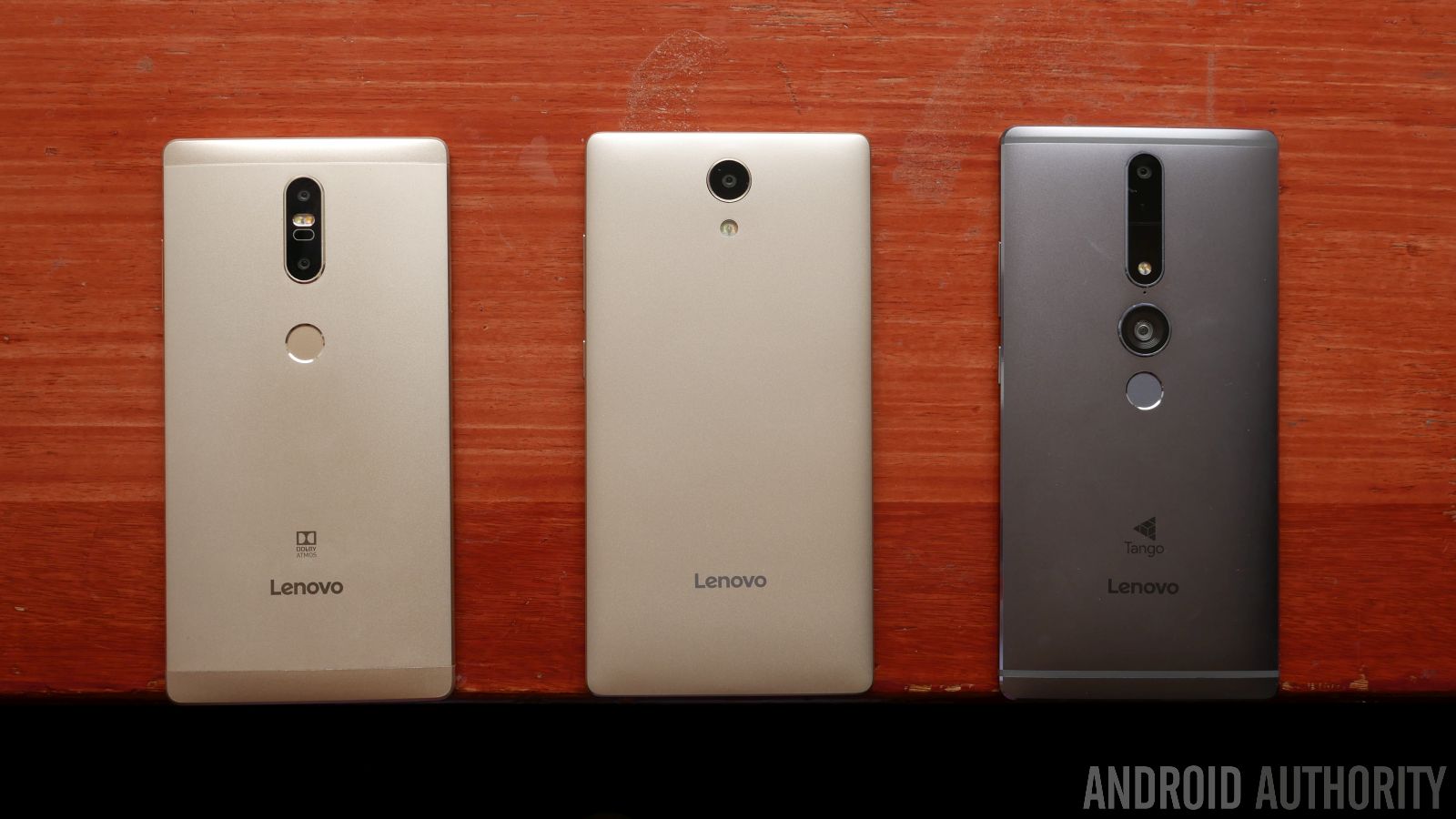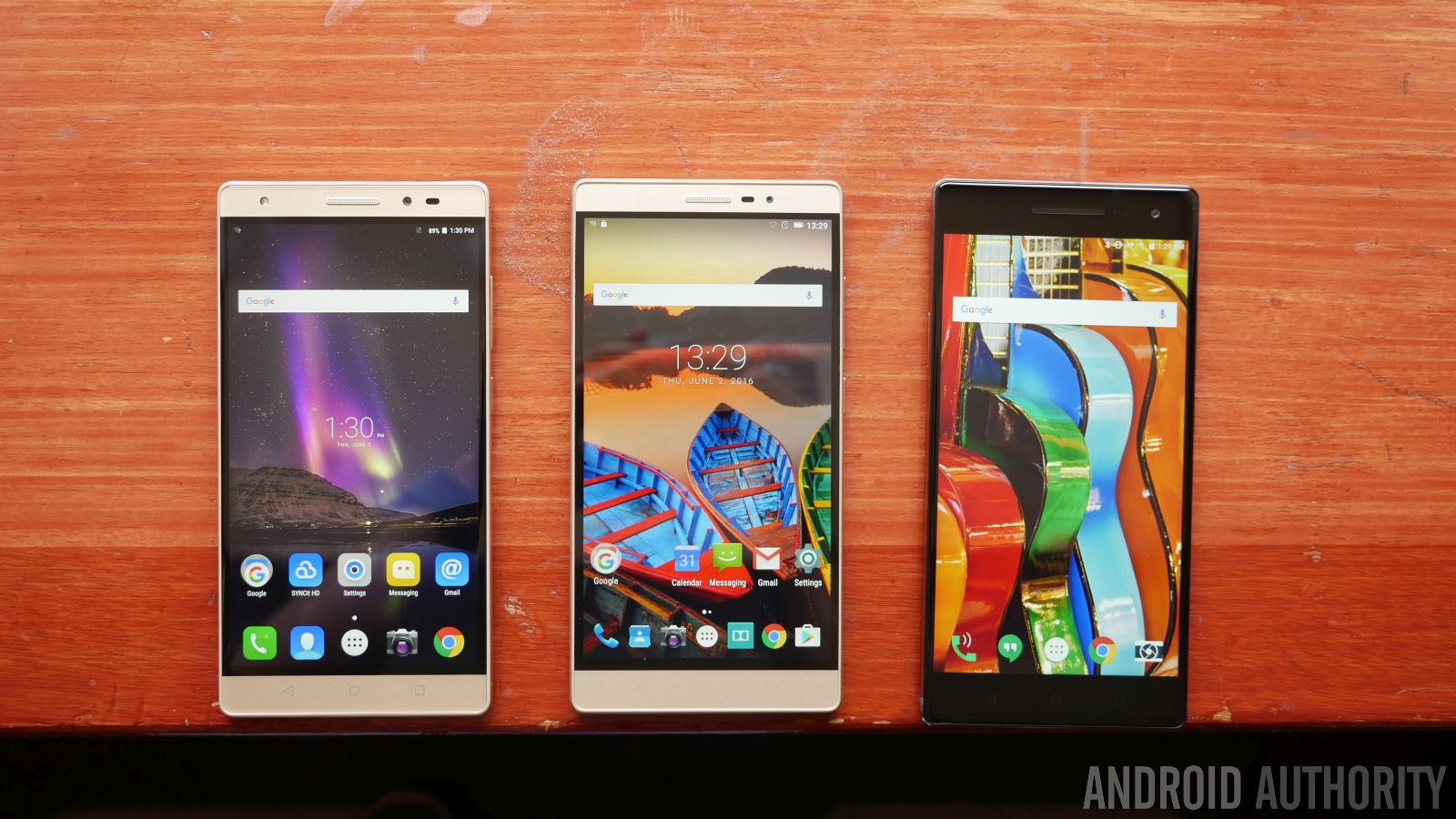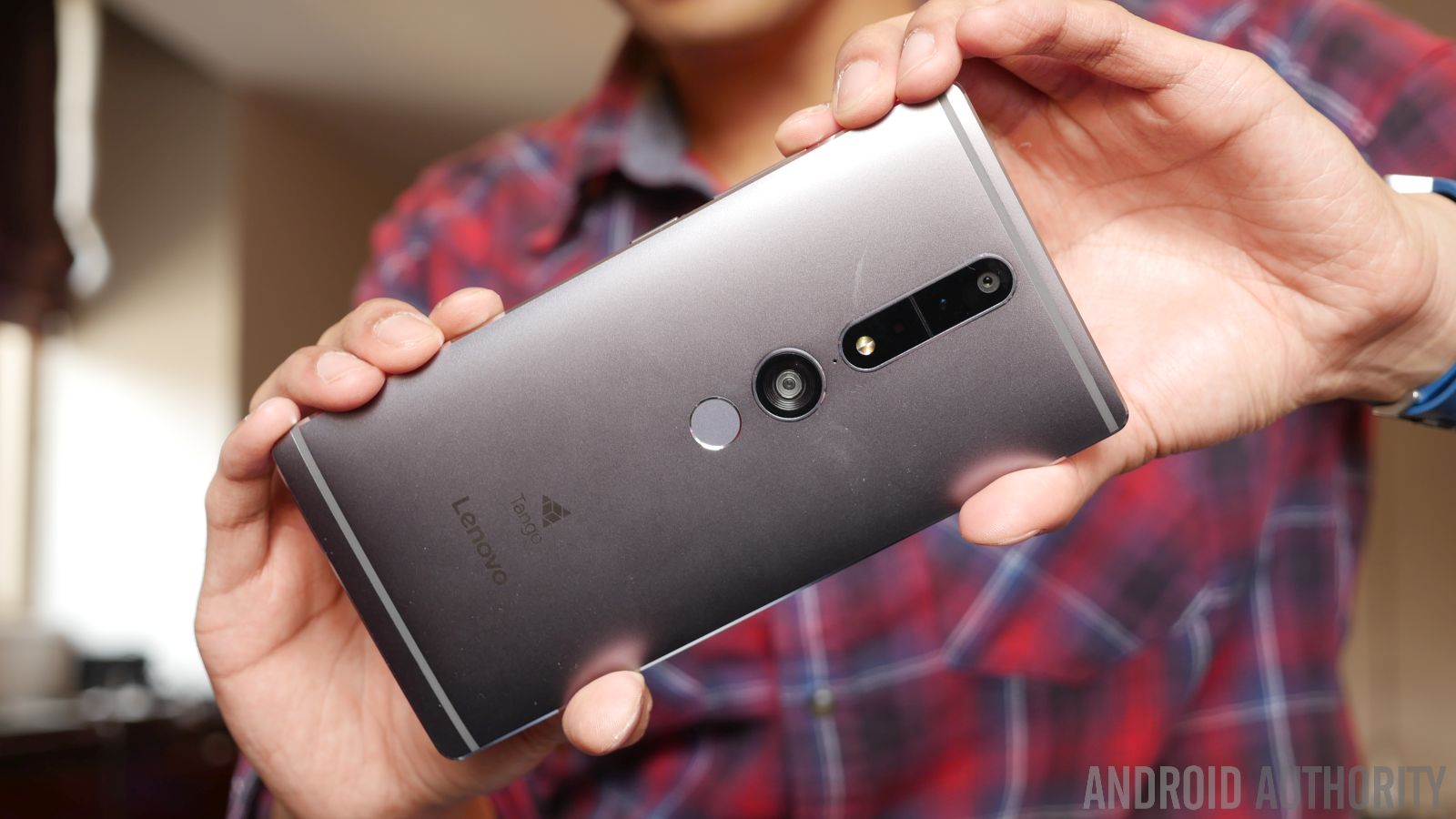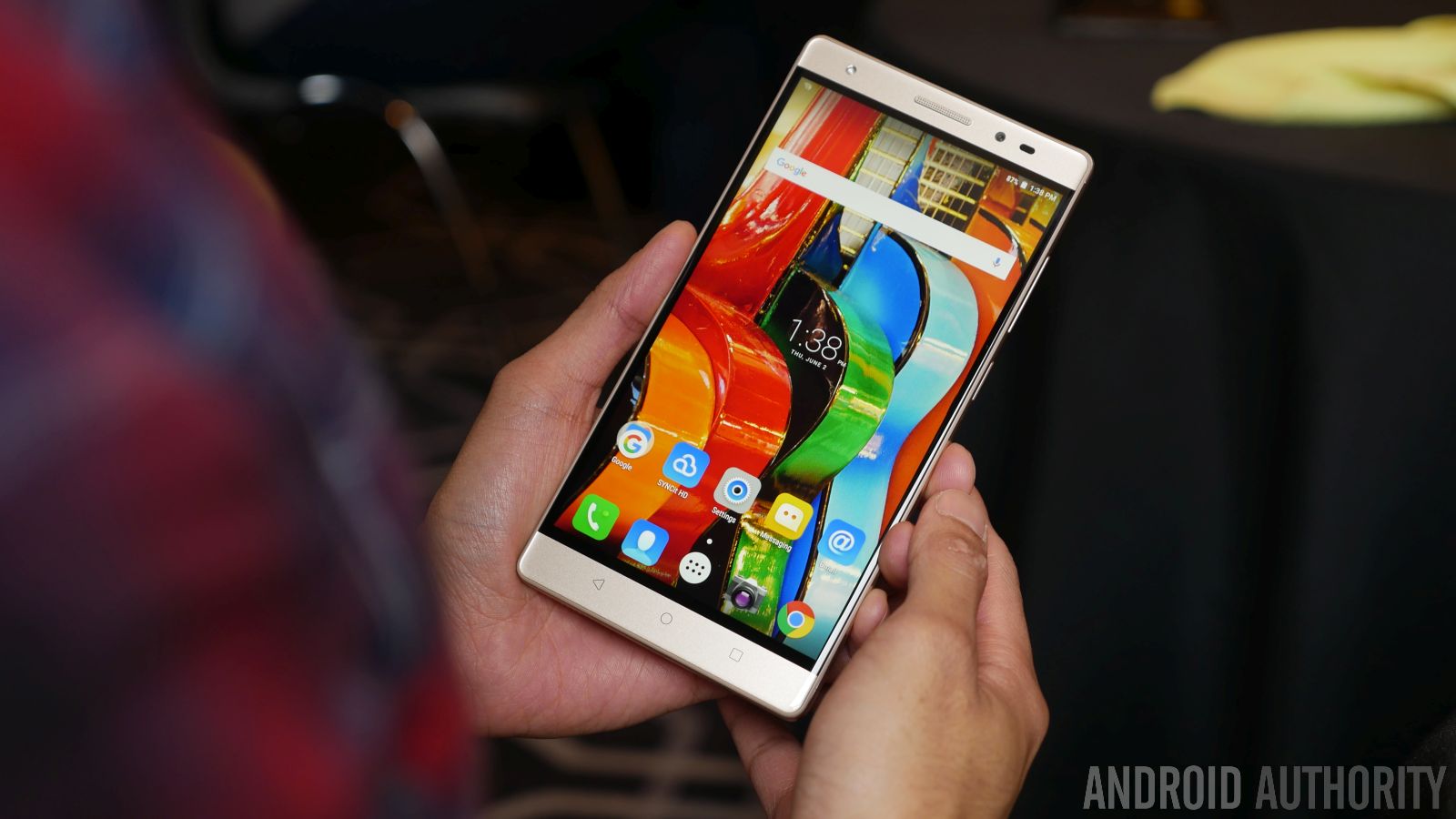Affiliate links on Android Authority may earn us a commission. Learn more.
Lenovo Phab 2, Phab 2 Plus, Phab 2 Pro hands on
June 9, 2016

It’s a grand old party for Lenovo, who for the longest time, has been manly focused on selling its smartphones abroad –but no longer. Now the time has finally come for the company to tackle the US market, a place that’s still largely uncharted territory for them, despite having acquired Motorola back in 2014.
Anyone can manufacture and sell an Android-based smartphone, but for Lenovo, its success hinges on offering at least a couple key qualities that help to differentiate its stuff from the vast number of players already saturating the market. Thankfully, Lenovo has seemingly delivered just that. Lenovo and Google have been teasing us about what Project Tango is capable of doing for a while now, but at long last, they’ve unveiled the world’s first Tango-enabled smartphone at Lenovo TechWorld 2016.
See also: Best Lenovo Phab 2 cases
In addition to the new Tango-powered handset, Lenovo have two other smartphones that are backed with irresistible prices and relatively few compromises considering the asking price. With the unveiling of its new Phab 2 line, it’ll be interesting to see how much attention Lenovo will get from consumers in the US market.
Design
We have three smartphones in this new line, the Lenovo Phab 2, Phab 2 Plus, and finally, the Tango-ready Phab 2 Pro. For the most part, the trio all share the same fundamental design language. They’re big phones, really big! As the model names imply, they’re phablets meant for people who love big phones – or those who want that bridge form-factor between 7-inch tablets and today’s average sized smartphones.
Part of the reason why they’re all so large is because they’re fashioned with 6.4-inch sized screens, which is plenty of real-estate room to enjoy movies and such. Now, the main differences between them are the materials used for their chassis. Being the entry-level of the bunch, the Phab 2 has a body comprised out of mostly plastic and doesn’t have a fingerprint sensor. A step up from that, the Phab 2 Plus swaps the plastic for metal (aluminum alloy) – while adding that fingerprint sensor as well. And finally, the Phab 2 Pro looks very similar to the Phab 2 Plus, given that it also boasts a metal body, but it has a unibody design with slightly thicker separator lines on the back.
Aesthetically, we wouldn’t say that these designs are necessarily fresh, especially when it looks very much like other metallic phones we’ve seen released this year including the HTC 10, the HUAWEI P9, and ZTE Axon 7. We’re not drooling over them, but despite that, we’ll give them credit for going with designs that aren’t just ripped directly from Motorola.

Display
As we’ve mentioned already, all three phones boast 6.4-inch sized screens, so there’s a ton of room to enjoy content. Just like their designs, they follow the same premise with their resolutions. With that, you’re going to find a 720p IPS screen with the Phab 2, a better 1080p display with the Phab 2 Plus, and a pixel crunching Quad-HD IPS display with the Phab 2 Pro.
The resolutions directly relate to their sharpness and detail, as the Phab 2’s 720p screen is pretty light on the fine details, while the Quad HD resolution of the Phab 2 Pro looks exquisitely detailed. Not only does it have the best looking screen out of the bunch, but it features what Lenovo refers to as an “Assertive Display,” which is simply means that it can optimize the image quality depending on the ambient lighting and the kind of content that’s being shown.

Hardware
You’ve probably already caught on to the low-mid-high range theme going between these three new smartphones, so don’t be shocked to find the same approach when it comes to processing hardware. The entry-level of the bunch, the Phab 2, features a quad-core MediaTek 8735 processor with 3GB of RAM and 32GB of internal storage. Next up, the Phab 2 Plus gets a small upgrade in the form of a quad-core MediaTek 8783 chip with 3GB of RAM and 32GB of saving memory. And finally, the Phab 2 Pro leverages the Qualcomm Snapdragon 652 (Tango Edition) SoC coupled with 4GB of RAM and 64GB of base storage.
Thankfully, every one of these devices offers expandable storage thanks to the available microSD card slots they offer. In terms of performance, however, it’s obvious that the Phab 2 Pro has the snappiest operation thanks to the Tango-optimized Snapdragon 652 it’s packing, which is needed for it to run many of the Tango features effectively. Conversely, the Phab 2 and Phab 2 Plus might seem like they’ve been overlooked, but don’t worry because they appear to operate relatively fine at least for those with relatively modest needs and expectations.
Camera
Now this is where things really get juicy, mainly because the Phab 2 Pro is fashioned with hardware that makes it Tango-ready. On the back, it’s hard to miss the camera modules and sensors that work hand-in-hand for Tango and the vast augmented reality experiences it’s capable of delivering. There are technically three major components that validate it being Tango-ready: a fisheye camera lens to get a wide view of the space, an RGB camera that helps in sensing what’s around the room, and an IR emitter that sends out an IR grid to measure the time of flight, or in laymen’s terms, its helps to measure distance. Needless to say, we’re really excited about this, but we’ll talk more about the Tango experiences in the next section.
As for the other two phones, they carry 13-megapixel cameras with phase detection auto-focus, but the Phab 2 Plus gets an extra jolt because it’s a dual-camera configuration for post-bokeh effects, and offers an f/2.0 aperture lens, laser auto-focus assist, and 1.34 micro pixels.

Software
Love it or hate it, all three phones are running Lenovo’s custom skin on top of Android 6.0 Marshmallow. That’s not necessarily a bad thing depending on who you talk to, but the more compelling thing here is how the Phab 2 Pro is Tango-ready, giving us a glimpse into the future of augmented reality with our smartphones. While augmented reality is nothing new in the grand scheme of things, Google’s work with Project Tango goes the extra step by giving freedom to AR – no longer restricting it to just a static experience.
What we mean by that is that you can use the Phab 2 Pro in ways that weren’t possible before. We managed to check out some Tango demos, like an upcoming Lowe’s app that provides conceptual ideas of what your future kitchen might look like by visualizing a specific stove, refrigerator, or other appliances right where you intend on putting them in a room. It’s a neat thing if you’re a home decorator especially, since you can visualize where things will go prior to actually buying them.
Another demo was a first person shooter having us destroy these aerial drones floating around the room. Even though we’re still in the early stages of what Tango is capable of, the demo shows us how it can map a room out with its sensors – thus, allowing us to move around the room to track and destroy these aerial drones. It makes us think about the possibility of one day seeing Tango-ready phones strapped into headsets like Google Cardboard, but rather than a stationary experience, we’d be able to move around in space.
We managed to check out several other demos too, like this one demo that allowed us to play and setup dominos in the AR space, and another dinosaur experience that showcases Tango’s ability to scale appropriately as you’re moving around in space. Overall, however, the software here with the Phab 2 Pro and Tango establishes a new experience that we haven’t seen before. As more developers get on board, we can only imagine getting better, more meaningful experiences.

Conclusion so far
Tango might be the big hoopla at Lenovo Tech World, but at the same time, it’s also Lenovo’s official foray into the US smartphone market. Better yet, they’re sticking with a firm strategy with the rollout of its Phab 2 line, just because they’re all priced aggressively – $199, $299, and $499 respectively for the Phab 2, Phab 2 Plus, and Phab 2 Pro. All three will be available globally beginning in September, but most likely earlier for the US.
Price-wise, they all have their value. At $199, you’re getting a mighty big phone that should be ample for most users with the Phab 2. Going up from that, the $299 Phab 2 Plus benefits from having a metal body, a fingerprint sensor, and slightly beefed up specs. And lastly, the $499 Phab 2 Pro is still not too shabby given that it has the same specs as any contemporary flagship right now, but it’s the sole device on the market that brilliantly shows off what Tango is capable of delivering.